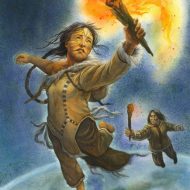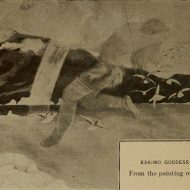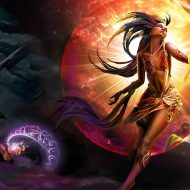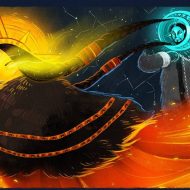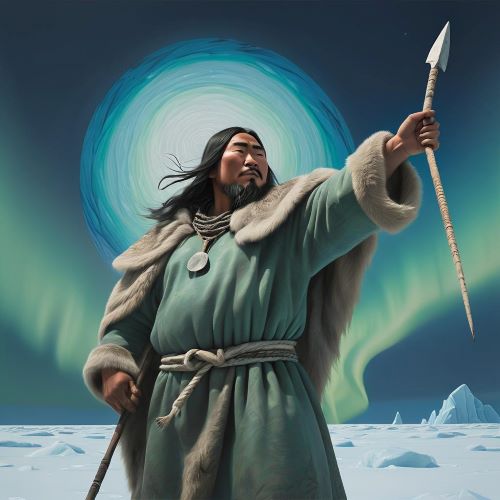Malina : The Sun Goddess
Listen
At a glance
| Description | |
|---|---|
| Origin | Inuit Mythology |
| Classification | Gods |
| Family Members | Igaluk (Brother) |
| Region | Greenland, Canada, Alaska |
| Associated With | Sun, Solar Eclipse |
Malina
Introduction
Malina is a solar deity in the Inuit mythology of the tribes of Greenland. The story of Malina is closely associated with the lunar deity known as Igaluk or Anningan who also happens to be her brother. Their constant chase is believed to be the reason for the movement of the Moon and Sun in the sky.
Inuit mythology states that Igaluk and Malina were very close when they were young. However, they eventually grew apart as they got older and lived in separate houses. He realised that Malina was the most beautiful of all women and started lusting after her. One night, after identifying the unique fabric of her clothes, Igaluk found her and mated with her.
Malina did not know the identity of the person who raped her and the next time it happened, Malina covered her hands with the oil lamps and wiped his face with it. After realizing that her brother was the one who had been sexually active with her, she became red and hot due to shame and anger. She ran to the sky with Igaluk right behind her.
Physical Traits
It is believed that Malina is extremely pretty in every region that subscribes to this belief system. In some areas of the Arctic, she is known to have a skeletal back. According to some stories, she cut off her breasts and presented them to her brother before she took off into the skies.
Family
Some stories claim that Malina and her brother Igaluk had children but the most common story among the Inuit tribes of Alaska, Canada and Greenland is that they were constantly in conflict due to the heinous act by Igaluk.
Powers and Abilities
Malina is not described as having any explicit powers other than being the sun goddess. Malina hates her brother and this directly relates to the hatred between the sun and moon. The hate continues to flow down to each of the opposite genders as well where the sun hates males and vice versa. This impacts the traditions of the Inuit’s as well because during a solar eclipse, men are not allowed to go out and during a lunar eclipse, women are not allowed to leave their houses. These two deities are known to cause diseases among those who offended them.
Modern Day Influence
The relationship between Malina and Igaluk is how the Inuit people described the monthly cycle and changes within the moon. While their myth does change slightly from region to region, it does usually contain some element of incest. Areas of Canada have made this deliberate, showing Malina and Igaluk fleeing from earth and rising to the sky in order to escape from shame. Certain areas in Alaska show the move to the sky as a way for the siblings to continue with their relationship.
Related Images
Frequently Asked Questions
What does Malina mean in Inuit?
In Inuit mythology, “Malina” is the name of the goddess of the sun. She is closely associated with the lunar deity known as Igaluk or Anningan, who also happens to be her brother. Their constant chase is believed to be the reason for the movement of the Moon and Sun in the sky
What is the Inuit myth of Malina?
In Inuit mythology, Malina is the sun goddess and Igaluk (also known as Anningan) is her brother, the moon god. They lived separately but were very close during their youth. One night, Igaluk found Malina and mated with her without revealing his identity. When Malina discovered that her brother was the one who had been sexually active with her, she was filled with shame and anger. She ran away to the sky, turning red and hot, with Igaluk chasing after her. Their chase is believed to be the reason for the movement of the Sun and Moon across the sky.
Who is the Inuit god of the sun?
In Inuit mythology, the god of the sun is known as Malina. She is often associated with her brother Igaluk, who is the moon god. Their constant chase is believed to be the reason for the movement of the Sun and Moon across the sky.
What is the Inuit myth of the sun?
In Inuit mythology, the sun is personified by the goddess Malina. According to the myth, Malina lived with her brother Igaluk (the moon god) during their youth. However, after a series of unfortunate events, Malina fled from Igaluk, running into the sky to become the sun. Igaluk chased after her, becoming the moon. Their constant chase is believed to explain the movement of the Sun and Moon across the sky.

